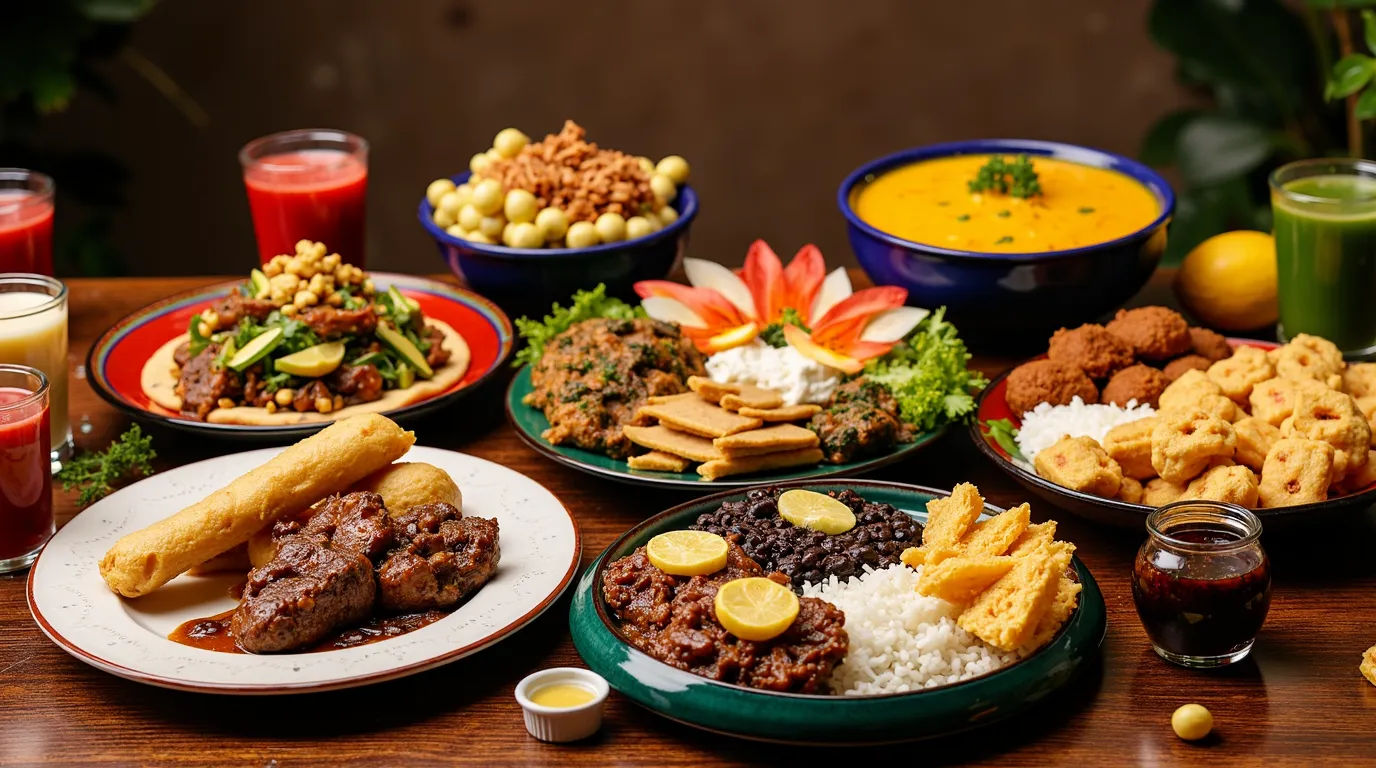Table of Contents
Table of Contents
Introduction
Venezuelan cuisine is a vibrant tapestry of flavors, techniques, and cultural traditions that reflect the country’s diverse history and geography. From the Caribbean coastline to the Andean highlands, every region of Venezuela boasts its own culinary identity, shaped by indigenous heritage, European influences, and the bountiful natural resources that the land provides. Whether it’s the hearty arepas stuffed with savory fillings, the sweet and tangy papelón-based drinks, or the mouthwatering meat and seafood dishes, Venezuelan cuisine offers an extraordinary range of tastes that can captivate any food lover.
What truly sets Venezuelan cuisine apart is the heartfelt pride and warmth embedded in every dish. Food is more than sustenance; it is an expression of cultural heritage and a symbol of hospitality. As you explore Venezuelan gastronomy, you will discover that it extends beyond the plate, offering a reflection of the country’s history, the fusion of different ethnic groups, and the sheer creativity of its people. In this article, we will take a comprehensive journey through the culinary context and history of Venezuela, delve into the key ingredients and local products, highlight must-try dishes, and discuss how tradition continues to evolve in modern times.
By understanding what makes Venezuelan cuisine so special, you can begin to recreate these dishes in your own kitchen or discover them in restaurants wherever you live. Let this exploration whet your appetite for adventure and inspire you to experience a culinary world that is both comforting and full of exciting new flavors.
Culinary Context and History
Early Beginnings and Indigenous Roots
Long before European colonizers arrived in the region, indigenous populations such as the Timoto-Cuicas, Arawaks, and Caribs thrived on the lands that now form Venezuela. Their diets were rooted in the abundant natural resources and the agricultural practices they developed over time. Staple crops included corn, beans, and root vegetables like yucca and sweet potatoes, while hunting, fishing, and gathering wild fruits further enriched daily meals. Even today, the hallmarks of Venezuelan cuisine—such as the use of corn in making arepas—reflect these ancient traditions.
These indigenous communities handed down ancestral cooking methods involving roasting over open fires, grilling meats, and using freshly ground corn dough. The simple yet robust flavors they developed would later fuse with incoming influences, evolving into more complex dishes. Hence, this early layer of Venezuela’s culinary history provides a firm foundation on which the country’s modern gastronomy stands.
European Influence Through Colonization
Spanish colonization, which began in the early 16th century, introduced new ingredients that transformed indigenous diets. Wheat flour, olives, onions, garlic, and various spices became an integral part of local cooking. Furthermore, the Spaniards brought with them their culinary techniques, such as sautéing, marinating, and baking, which broadened how Venezuelans prepared their meals. As the colonists established plantations and haciendas, agricultural practices changed significantly, leading to a diversification of crops like sugarcane and coffee.
Additionally, Spanish recipes and cooking traditions gradually merged with indigenous practices, resulting in a hybrid gastronomy. Over time, African slaves, brought to work on the plantations, further contributed by introducing their own techniques and ingredients—particularly in the coastal regions where seafood, plantains, and coconuts began to feature more prominently. These overlapping cultural footprints defined much of what we know as Venezuelan cuisine today.
The Impact of Trade and Migrations
Throughout the colonial and postcolonial periods, Venezuela was connected to global trade routes that introduced even more ingredients. Cocoa, originally cultivated by indigenous communities, became a prized export commodity, and it remains an important part of Venezuelan cuisine for both local use and international trade. Later, waves of immigrants from Italy, Portugal, Germany, and the Middle East brought culinary traditions that seamlessly merged with Venezuelan staples.
In the 20th century, an influx of European and Middle Eastern immigrants, especially after World War II, enriched the nation’s gastronomic landscape. Pastas, breads, pastries, cheeses, and a variety of Mediterranean-inspired dishes entered the Venezuelan diet. Today, the result is a tapestry of flavors: a unique blend where cornmeal arepas coexist with pasta bakes, where hallacas (similar to tamales) might feature a bit of Mediterranean flair, and where local spices accentuate globally inspired dishes.
Regional Differences
One of the most striking aspects of Venezuelan cuisine is the distinct culinary identities between different regions:
- The Andean Region (West): High-altitude areas like Mérida and Táchira favor heartier, warming dishes. Potatoes, legumes, and cured meats appear frequently, reflecting European influence and the region’s cooler climate. Local cheeses, thick soups, and slow-cooked stews are common fare.
- The Central Region (North-Central): The bustling urban areas of Caracas and its surroundings have a more cosmopolitan palate. Here, global gastronomic influences mesh effortlessly with traditional Venezuelan dishes. Street food, such as arepas, tequeños (fried cheese sticks), and empanadas, is immensely popular.
- The Coastal and Island Region (North and East): Along Venezuela’s extensive Caribbean coastline, fresh seafood, fish, coconuts, and plantains dominate. The abundance of fish (pargo, grouper, and snapper), shrimp, and lobster forms the basis of many local delicacies. You’ll also find that coconut milk, tropical fruits, and spicy sauces enhance these maritime offerings.
- The Llanos (Plains, Central and South): In this vast grassland region, livestock production is central, so meats, particularly beef, feature prominently. Grilled or slow-cooked, these cuts are seasoned simply yet authentically. Cassava bread and other starchy sides made from yucca often accompany these robust meals. Cowboys, known as “llaneros,” have deeply influenced this region’s cuisine, which is rustic, hearty, and reflective of the open plains lifestyle.
- The Amazon (Far South): In the dense rainforest areas of Venezuela, indigenous communities maintain ancestral diets rich in wild game, fish, tropical fruits, and unusual ingredients like insects and exotic plants. While less accessible to mainstream audiences, Amazonian gastronomy underscores the incredible biodiversity of the country.
These regional variations have evolved over centuries, shaped by climate, soil, trade, and cultural exchange. Yet, they collectively form the mosaic we call Venezuelan cuisine, united by a love of fresh produce, vibrant seasonings, and a shared heritage of indigenous, European, and African influences.
Key Ingredients and Local Products
Emblematic Foods
- Corn and Cornmeal: A staple across the nation, corn is used to create arepas, cachapas (corn pancakes), and the dough for hallacas. Pre-cooked cornmeal, typically sold as harina P.A.N., is a cornerstone of many Venezuelan households.
- Beans (Caraotas): Black beans, or caraotas negras, are a mainstay on Venezuelan tables, often served alongside rice, meats, and plantains.
- Plantains: Both ripe (maduros) and green (verdes) plantains feature prominently in dishes, from fried tajadas to patacones (fried plantain “sandwiches”). Plantains provide a sweet or savory counterpoint, depending on their ripeness.
- Meats and Seafood: Beef is particularly beloved, especially in the Llanos region where asado negro (slow-cooked beef in a dark sauce) is a common dish. Coastal and island communities rely heavily on fish and shellfish, seasoned with tropical fruits and spices.
- Cheeses: Venezuelan cheeses, such as queso guayanés, queso telita, and queso de mano, have a distinct freshness and mild flavor. Used in arepas or eaten as snacks, these white cheeses are versatile in sweet and savory preparations.
- Spices and Herbs: Cumin, achiote (annatto), and paprika-like seasonings add color and warmth to stews and sauces. Cilantro, parsley, and culantro (a cousin of cilantro) are common herbs in salsas and marinades.
- Tropical Fruits: Mango, papaya, guava, passion fruit, and pineapple thrive in Venezuela’s varied climate. These fruits often appear in juices, desserts, or accompanying savory dishes to balance the flavors.
Seasonality and Its Impact
Given Venezuela’s tropical climate, many fruits and vegetables are available year-round. However, certain products like avocados, different mango varieties, and some root vegetables still have peak seasons. During the rainy season (typically from May to November), crops like yucca and plantains might see a surge. Meanwhile, drier months may offer better conditions for certain fruits. In mountainous regions, cooler climates yield vegetables like potatoes and carrots continuously, but local festivals often revolve around harvesting seasons—particularly for corn, beans, and sugarcane.
Seasonality also affects seafood availability along the coast, influencing which fish are featured in local markets. Cultural festivities, like Christmas and Easter, align with times when households prepare traditional recipes using fresh and abundant local products. Hallacas, for instance, are made using cornmeal, vegetables, and meats that are widely accessible during the holiday season.
Tips on Purchasing These Ingredients
- Local Markets: If you live near a Hispanic or Latin American market, you’ll likely find pre-cooked cornmeal (the brand P.A.N. is nearly synonymous with Venezuelan cuisine). Fresh plantains, tropical fruits, and Latin American spices are often available in these stores.
- Specialty Stores: Shops focusing on Latin American imports will carry harder-to-find items like certain Venezuelan cheeses. If fresh cheeses are unavailable, consider the closest equivalents, such as queso fresco or a mild mozzarella.
- Online Retailers: Many online grocery services offer Venezuelan ingredients like achiote powder, papelón (unrefined cane sugar), and the beloved cornmeal. For fresh products, check for local produce subscriptions that include tropical fruits and vegetables.
- Farmers’ Markets: In some regions, you can find small-scale farmers who grow Latin American vegetables and herbs, ensuring fresher products. Visiting these markets can give you access to organic and seasonal produce that closely matches authentic Venezuelan flavors.
Must-Try Traditional Dishes
Arepas
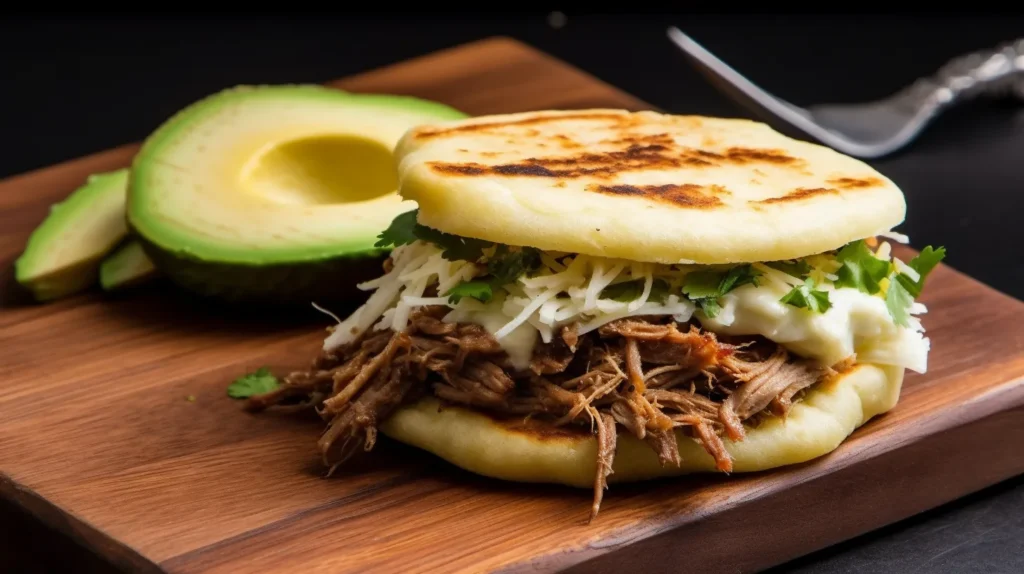
History and Characteristics
The arepa is often referred to as the heart of Venezuelan cuisine. A cornmeal patty traditionally grilled or fried, the arepa dates back to indigenous populations who relied on ground corn as a daily staple. Over centuries, this simple yet highly adaptable food has become a national treasure.
Ingredients and How to Make Them
Making arepas requires only a few basic ingredients: pre-cooked cornmeal, water, and salt. Some people add a bit of oil or butter to the dough for extra richness.
- In a mixing bowl, combine 2 cups of pre-cooked cornmeal with a pinch of salt.
- Gradually add about 2.5 cups of warm water (adjust if needed). Knead until the dough is smooth and pliable, but not sticky.
- Form small patties about ½ inch thick.
- Place them on a lightly oiled griddle or skillet over medium heat. Cook until golden on each side, then finish in the oven at 350°F (175°C) for 10 minutes if you like them crispy.
Cut the finished arepas open and fill them with your choice of shredded beef, black beans, cheese, avocado, chicken salad, or any savory combination. Regionally, fillings differ: coastal areas might add fresh seafood, while Andean areas might favor local cheeses.
Pabellón Criollo
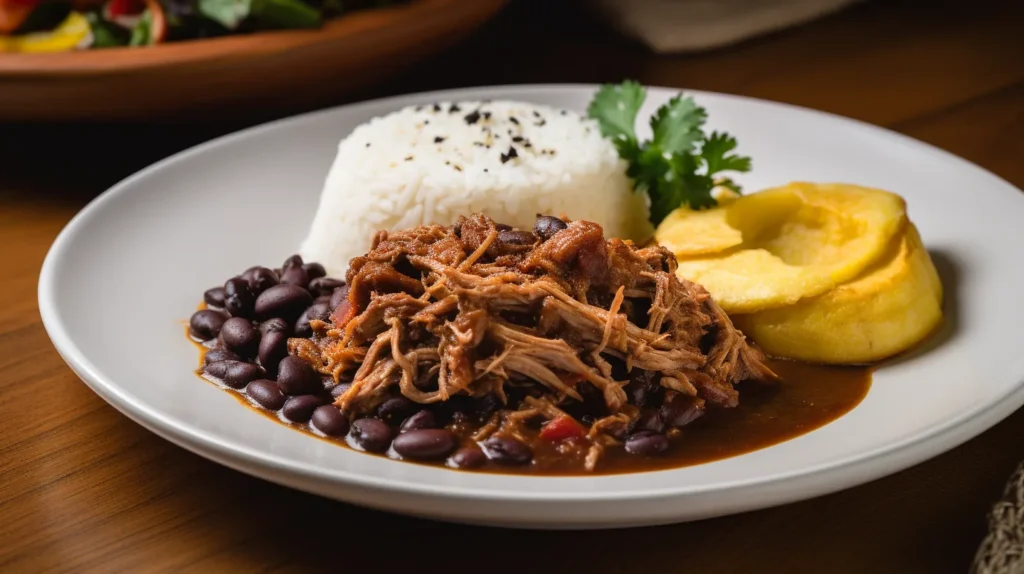
History and Characteristics
Pabellón criollo is considered the national dish of Venezuela, featuring shredded beef, black beans, white rice, and fried plantains. Some say its colors (dark beans, white rice, yellow plantains, and rich beef) represent Venezuela’s cultural fusion. The name “pabellón” refers to a pavilion or flag-like arrangement on the plate.
Ingredients
- Shredded beef (slow-cooked flank steak or brisket with onions, bell peppers, and tomatoes)
- Seasoned black beans (caraotas negras)
- White rice
- Fried sweet plantains (tajadas)
Hallacas
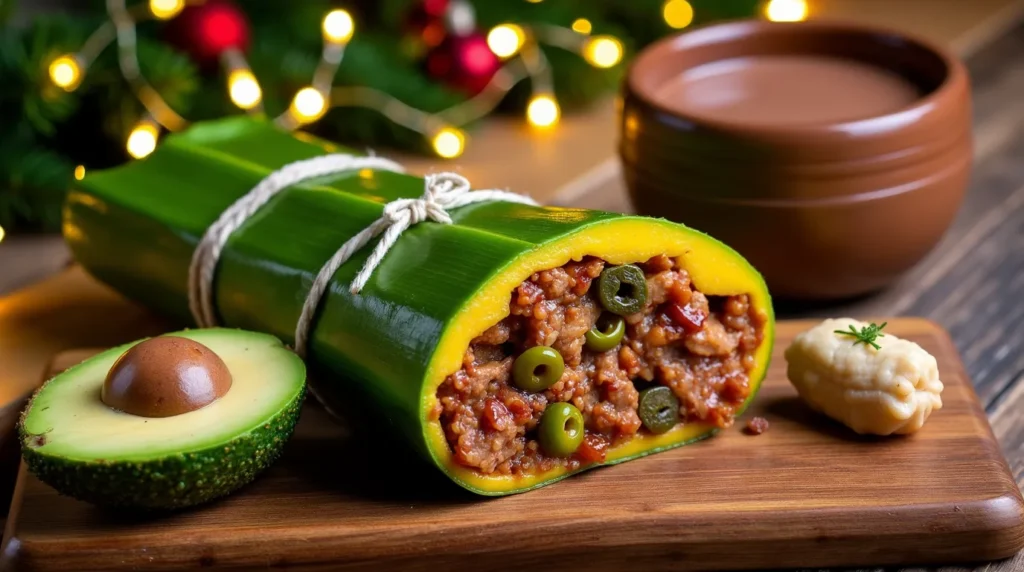
History and Characteristics
Hallacas are synonymous with Venezuelan Christmas festivities. Similar in concept to Mexican tamales, hallacas use corn dough filled with a stew of meats (beef, pork, chicken), raisins, olives, and capers, then wrapped in banana leaves and boiled. Each family has its own treasured recipe, often passed down through generations.
Regional Variations
- In the Andean region, hallacas can be smaller and spicier.
- Coastal versions might include seafood or fish.
- Some families add almonds or chickpeas to the filling for extra texture and flavor.
Though elaborate to prepare, hallacas are deeply tied to Venezuela’s cultural fabric, symbolizing unity, heritage, and the collective effort of families coming together during the holidays.
Cachapas
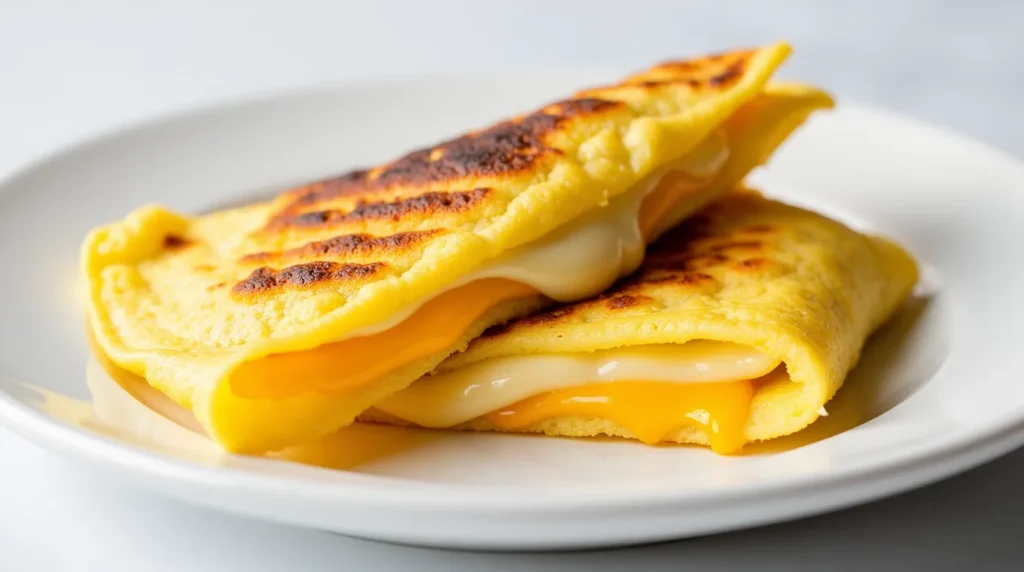
These sweet corn pancakes are a favorite street food, typically folded around a slice of fresh white cheese like queso de mano. Made from fresh corn kernels rather than pre-cooked cornmeal, cachapas have a sweet, rustic flavor that pairs wonderfully with salty cheese or meats.
Simplified Recipe for Cachapas
- Blend 2 cups of fresh corn kernels with ¼ cup of milk, a pinch of salt, and a little sugar.
- Heat a non-stick pan over medium heat with a bit of oil.
- Pour a ladle of the blended batter to form a small pancake.
- Cook until golden on one side, then flip.
- Place a slice of cheese on top while still warm, fold, and enjoy.
Cachapas are a brunch favorite and can also be served as a snack or light meal.
Defining Characteristics of Venezuelan Cuisine
Venezuelan cuisine balances vibrant flavors and hearty comfort, making it both appealing and accessible to a wide array of palates. While it is not typically “spicy” in the sense of intense chili heat, it can be aromatic and rich, thanks to cumin, garlic, onions, bell peppers, and the occasional touch of hot pepper. Sweet and salty elements coexist in many dishes, as seen in the combination of fried sweet plantains with savory meats and beans.
Unique Seasonings and Combinations
- Sofrito Base: The combination of onion, garlic, bell peppers, and annatto is commonly sautéed in oil to form a flavor base for soups, stews, and rice dishes.
- Papelón: Unrefined cane sugar is a sweetener used in sauces like guasacaca and papelón con limón (a refreshing drink made with cane sugar and lime).
- Cilantro and Culantro: While cilantro is familiar worldwide, culantro has a stronger, more pronounced flavor. These herbs lend Venezuelan cuisine its bright, herbaceous edge.
Appeal to Food Enthusiasts
For those seeking something new yet not overwhelmingly spicy, Venezuelan cuisine offers a well-rounded range of tastes. The mild heat level allows the nuanced flavors of fresh herbs, spices, and local produce to shine. Furthermore, many dishes are naturally gluten-free (due to heavy reliance on cornmeal instead of wheat), which can appeal to individuals with specific dietary needs. The interplay of sweet and savory elements adds complexity to each bite, while the rich cultural heritage behind every dish fascinates culinary explorers looking to discover authentic global traditions.
Tips and Highlights to Encourage People to Try This Cuisine
- Cultural Immersion: Venezuelan cuisine is deeply tied to community and celebration. Attending local festivals or family gatherings (if you have Venezuelan friends) is a fantastic way to experience the warmth and hospitality ingrained in each meal.
- Exploration of Flavors: If you love Latin American cuisines but want something that balances comfort food with fresh, bright tastes, Venezuelan dishes are an ideal gateway. You can enjoy thick corn patties, bold stews, and sweet fried plantains all in one meal.
- Simplicity and Accessibility: Many recipes are straightforward and easy to adapt with locally available substitutes. Pre-cooked cornmeal, for instance, is now widely distributed around the world, making it possible to whip up a batch of arepas wherever you live.
- Connection to Nature: Emphasizing local produce like tropical fruits, yucca, and plantains connects you to Venezuela’s varied landscapes. Incorporating these ingredients into your meals provides a delicious way to eat more seasonal, fresh foods.
- Anecdotes and Stories: Beyond the dishes themselves, Venezuelan cuisine brims with cultural lore—grandmothers’ secret hallaca recipes, the rivalry over whose pabellón criollo is best, or the joy of street vendors flipping cachapas on a hot griddle. These stories evoke a sense of wonder and can make your culinary journey all the more memorable.
Table Rituals and Customs
Daily Meal Structure
- Breakfast (Desayuno): Arepas filled with cheese, beans, or scrambled eggs are a typical start to the day. Another popular breakfast item is the “perico,” which is scrambled eggs mixed with onions, tomatoes, and peppers.
- Lunch (Almuerzo): Traditionally the largest meal, lunch may include a soup (like sopa de pollo or pisca andina in the Andes) and a main dish such as pabellón criollo or a hearty stew. Many people also enjoy fresh fruit juices or papelón con limón alongside lunch.
- Afternoon Snack (Merienda): If there’s a break in the day, Venezuelans may snack on tequeños or pastelitos (savory pastries). A cup of coffee—either café negro (black coffee) or café con leche (coffee with milk)—often accompanies this snack.
- Dinner (Cena): Typically lighter than lunch, dinner might be another round of arepas, or something quick and comforting like empanadas or sandwiches. In modern urban settings, dinner can be more elaborate, especially when dining out.
Etiquette and Traditions
- Sharing Food: It is very common for Venezuelans to encourage guests to eat more. Turning down an offer for a second helping can sometimes be seen as polite restraint, but persistent hosts may continue to urge you to take “just a little more.”
- Family-Centered Meals: Mealtime is often a family affair. During national holidays or big celebrations, extended families gather to prepare and share traditional dishes like hallacas or asado negro.
- Gestures to Avoid: Generally, Venezuelan table manners reflect politeness and warmth. People often wait for everyone to be served before beginning the meal. It is also courteous to compliment the host and the food.
Special Events and Festivities
- Christmas Celebrations: The holiday season centers around hallacas, pan de jamón (ham and raisin bread), and dulce de lechosa (green papaya dessert). Families spend days preparing hallacas together, reinforcing bonds and preserving culinary heritage.
- Carnival: Marked by lively parades and parties, Carnival features an array of street foods, snacks, and sweets reflecting the joyous atmosphere.
- Easter and Holy Week: Some families refrain from eating meat, relying on fish dishes and local vegetables during this period.
- Birthdays and Family Gatherings: No Venezuelan birthday party is complete without tequeños—fried dough-wrapped cheese sticks—which guests eagerly devour alongside cake and other treats.
Modern Trends and Culinary Fusions
Evolving Through Global Influences
With globalization, Venezuelan cuisine continues to adapt and grow. Migration has led many Venezuelans to settle abroad, taking their favorite recipes with them. As a result, you can find arepa bars in major cities worldwide, often blending local produce with traditional fillings. In return, international ingredients have found their way into Venezuelan kitchens back home, broadening the scope of traditional recipes.
Fusion Cuisine and Experimentation
Young chefs and food entrepreneurs in Caracas, Maracaibo, and other metropolitan areas have begun experimenting with fusion cuisine, creating novel dishes that marry Venezuelan staples with Asian, Mediterranean, and North American elements. For example, arepas stuffed with kimchi and pork belly, or cachapas served with goat cheese and caramelized onions. These creative twists expand the possibilities of Venezuelan cuisine while showcasing the country’s openness to global culinary innovations.
New Consumption Trends
- Vegetarianism and Veganism: While traditional Venezuelan dishes often include meats, there has been a growing interest in plant-based diets. Chefs are crafting vegan versions of hallacas, pabellón criollo made with shredded jackfruit or lentils, and cruelty-free arepa fillings.
- Farm-to-Table: Some restaurants and home cooks emphasize sourcing fresh produce from local farmers. This approach revives traditional seed varieties, supports small-scale agriculture, and guarantees better flavor and nutritional value.
- Organic and Health-Conscious Choices: As people become more mindful of healthy eating, dishes featuring whole grains, reduced sodium, and natural sweeteners are gaining traction. Blended fruit smoothies, salads with exotic greens, and grilled fish wrapped in banana leaves reflect a shift toward lighter, nutrient-dense meals.
Highlighting Young Chefs and Innovators
- Innovative Arepa Bars: Around the world, Venezuelan-run eateries are reinventing the arepa, offering fillings that range from classic shredded beef to global-fusion ingredients.
- Artisanal Food Producers: Small businesses specializing in artisanal chocolates, cheeses, and jams are flourishing. Venezuela’s reputation for premium cocoa is merging with modern chocolate-making techniques, resulting in world-class confectionery.
- Social Enterprises: Amid economic challenges, there are initiatives that promote community-based cooking projects and sustainable farming. These enterprises aim to preserve culinary heritage while creating job opportunities and fostering social development.
By blending tradition with innovation, Venezuelan cuisine remains as dynamic as the country itself. Younger generations respect the flavors they grew up with while also pushing boundaries, ensuring that the nation’s gastronomy will continue to captivate and surprise global audiences.
Conclusion and Call to Action
Venezuelan cuisine tells a story of cultural convergence—where indigenous wisdom, European culinary arts, and African traditions harmonize to create something unique. We’ve explored how this cuisine developed over centuries, traversing regions from the high peaks of the Andes to the lush plains of the Llanos and the sparkling Caribbean coast. We’ve delved into key ingredients like cornmeal, plantains, meats, fresh cheeses, and tropical fruits, learning how seasonality influences cooking practices. We’ve highlighted emblematic dishes—arepas, pabellón criollo, and hallacas—and shown how they reflect Venezuela’s diverse heritage and communal spirit.
Perhaps one of the most fascinating aspects of Venezuelan cuisine is its adaptability. Whether you’re seeking comforting classics or exciting fusion, there’s always a new twist to discover. For food enthusiasts, the balanced flavors, fresh produce, and welcoming nature of Venezuelan gastronomy offer endless possibilities. Whether you decide to try your hand at making homemade arepas or you plan to visit a local arepa bar, you’ll be participating in a culinary tradition that continues to evolve while staying firmly rooted in its heritage.
We invite you to share your own experiences, whether you’ve already tried Venezuelan dishes or are curious to make them for the first time. Have a favorite arepa filling? A family recipe for hallacas? Questions about where to find unique ingredients? Your insights enrich the conversation and encourage others to embark on this gastronomic journey.
In a future article, we’ll dive deeper into the world of Venezuelan sweets and desserts—where chocolate, tropical fruits, and indigenous traditions come together to form an entirely different facet of this versatile cuisine. Until then, may your kitchen be filled with the vibrant aromas and flavors that make Venezuelan cuisine a delight worth exploring time and again.

